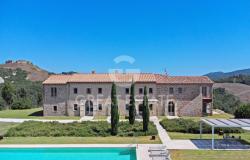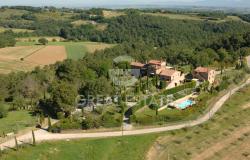 Italian 'spumante' continues to win fans abroad who last year helped drive exports of the white sparkling wine up 7.3% in value and 6.7% in volume, the Coldiretti farmers' union reported.
Italian 'spumante' continues to win fans abroad who last year helped drive exports of the white sparkling wine up 7.3% in value and 6.7% in volume, the Coldiretti farmers' union reported.
Spumante even made major headway in France, home of its more famous and popular rival champagne, where exports jumped 24% and now represent 6% of the spumante Italy sells abroad. Germany remained spumante's biggest market last year buying up 21% of Italy's exports, with a 7% increase over 2004.
According to a study commissioned by Coldiretti, 8.5 million Germans prefer to celebrate special occasions with Italian bubbly compared to only three million who opt for champagne. The United States was again third, absorbing 17% of Italian exports, despite a 4% drop in demand.
Spumante's popularity soared in the US in the wake of the anti-French feeling there, caused by France's opposition to the Iraq war, but the 2005 data would appear to indicate that Americans are rediscovering their taste for champagne, observers noted.
Spumante remains big at home, too, where almost 56 million bottles were consumed in 2005, a 2% increase in value.
Although the majority of Italians prefer sweet spumante, which represented 59% of the bottles of bubbly sold last year, drier spumante made using the traditional French Champenoise Method is becoming increasingly popular with a 13% increase in the amount consumed in 2005.
It now represents 8% of all sparkling wine drunk in Italy, compared to 2.4% for French champagne.
Most Italian spumante is made using the Charmat Method or 'closed tank' method, invented in the early 1900's by Eugene Charmat.
This method involves putting bubbles in wine by adding sugar to a sealed tank, letting a second fermentation take place and then transferring it to a bottle under pressure. In the Champenoise Method, invented by the French monkDom Perignon in 1640, the wine is fermented in the same bottle in which it will eventually be served, to which the liqueur de tirage - a syrupy solution that includes cane sugar and special strains of yeast - is added.
The bottles are then sealed and stored upside down to allow the yeast and other residues to deposit in the neck. Once the wine has aged sufficiently, the residue in the neck is frozen, the seals are removed and the pressure of the bubbles ejects the plug of residue.
Before being definitively sealed with a cork, the so-called liqueur d'expedition, a solution of aged wine and cane sugar, is added and this determines the wine's dryness.








